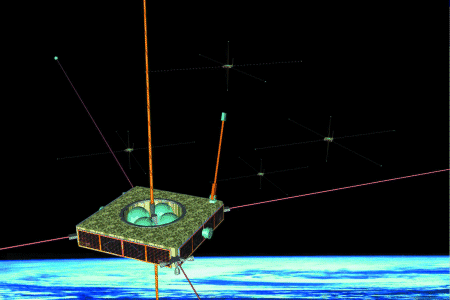The UK's Surrey Satellite Technology (SSTL) has come under fire from a US Congress defence panel which says that some of the company's nano-, micro- and mini-satellites, which are supplied to other countries such as China, could "be used to inspect bigger satellites, capture images and perform other functions - or even be turned into weapons".

SSTL's first nano-satellite, SNAP 1, has demonstrated its ability to fly in close formation with another SSTL satellite, China's Tsinghua 1, and take close-up images, but it has limited manoeuvrability.
Congress does not say that SSTL has done anything "illegal", but it does believe that there is a future potential for "concern".
SSTL has technology transfer agreements with 12 countries, including Pakistan, South Korea and Chile, enabling some nations to take their first steps into space. Other countries building micro-satellites, such as Sweden and Israel, are also cited in the Congressional report.
"Any satellite with on-board propulsion and navigation capability is potentially an anti-satellite weapon, and that means a large number of satellites from several countries in orbit today," says Prof Martin Sweeting, SSTL managing director. He adds that the SNAP 1 nano-satellite does not involve any collaboration with China. "The only connection is that they were launched together," he says.
SSTL is working on a number of projects with the USA. It has supplied two SNAP nano-satellites to the US Air Force as part of a cadet training programme and built the PicoSat micro-satellite for the USAF, for launch in August.
SSTL has recently been awarded a $120,000 contract by NASA to contribute to the Magnetospheric Multiscale (MMS) mission. This will involve a constellation of small spacecraft which will study the Earth's magnetosphere. SSTL is the only non-US supplier of the mini-satellite platform in NASA's Rapid II programme.
The two-year MMS mission, to be launched in 2005, will include formation-flying by the satellites and two lunar "sling-shots", the latter using the moon's gravity to alter the satellites' orbital paths and change the plane of the constellation.
Sweeting hopes that SSTL's work, such as the MMS project, will be "looked on more favourably by the new US administration".
Source: Flight International























